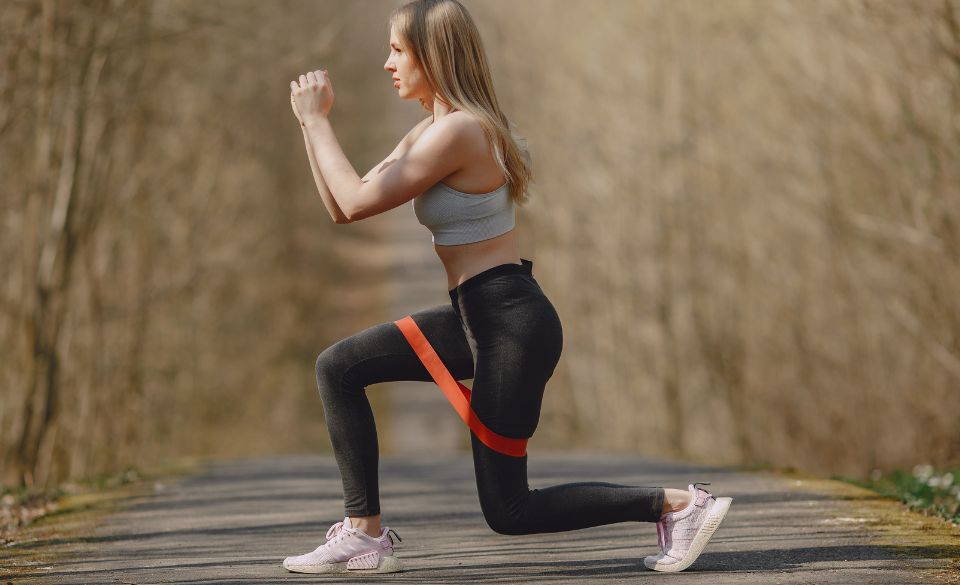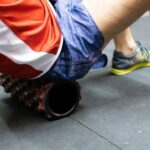
Why Are My Legs Shaking During Workouts
Page Contents
Have you ever experienced your legs shaking uncontrollably during a workout? It can be a surprising and sometimes unsettling sensation. But fear not, this shaking phenomenon is not uncommon, and it’s often a sign that your body is responding to the demands you’re placing on it. In this article, we’ll delve into the reasons why your legs may shake during workouts and shed light on this intriguing occurrence.
Muscle Fatigue and Overexertion
One of the primary reasons for leg shaking during workouts is muscle fatigue and overexertion. When you engage in intense physical activity, such as weightlifting, high-intensity interval training (HIIT), or even endurance exercises, your muscles work hard and may reach a point of fatigue. As your muscles become fatigued, they struggle to maintain the level of tension required to stabilize your body, leading to shaking or trembling sensations.
A study published in the Journal of Applied Physiology suggests that muscle fatigue disrupts the firing pattern of motor units, which are responsible for muscle contractions. As a result, your muscles may exhibit involuntary twitches or shakes as they struggle to maintain their activity.
If you experience leg shaking during a workout, it could be a sign that your muscles are reaching their limits. It’s important to listen to your body and give yourself adequate rest and recovery time between intense exercise sessions to prevent overexertion and potential injuries.
Muscle Activation and Neuromuscular Adaptation
Another reason for leg shaking during workouts is the activation and adaptation of your neuromuscular system. When you challenge your muscles with new exercises or higher resistance, your nervous system needs to recruit additional motor units to handle the increased workload. This recruitment process may result in temporary trembling or shaking as your body adjusts to the new demands.
A study published in the Journal of Strength and Conditioning Research suggests that trembling during exercise can be attributed to neuromuscular adaptations. The researchers found that when individuals performed exercises at intensities above their normal routine, muscle activation increased, leading to visible shaking or trembling.
As your body becomes accustomed to the exercise stimulus and adapts to the increased demands, the shaking sensation typically diminishes. Over time, your neuromuscular system becomes more efficient at recruiting the necessary muscle fibers, reducing the occurrence of leg shaking during workouts.
Depletion of Energy Stores
The depletion of energy stores, specifically glycogen, can also contribute to leg shaking during workouts. Glycogen is the stored form of glucose, which is the primary source of fuel for your muscles during exercise. When your glycogen stores become depleted, your muscles may struggle to maintain their contractions, resulting in trembling or shaking.
A study published in the European Journal of Applied Physiology investigated the effects of glycogen depletion on muscle performance. The researchers found that as glycogen stores diminished, muscle function deteriorated, and the likelihood of experiencing muscle tremors increased.
To prevent excessive shaking due to energy depletion, ensure that you adequately fuel your body before and during workouts. Consuming carbohydrate-rich foods or beverages can help replenish glycogen stores and provide the energy your muscles need to perform optimally.
Hydration and Electrolyte Imbalance
Maintaining proper hydration and electrolyte balance is crucial for muscle function and preventing leg shaking during workouts. Electrolytes, such as sodium, potassium, and magnesium, play a vital role in muscle contractions and nerve impulses. Imbalances or deficiencies in electrolytes can disrupt these processes, leading to muscular tremors.
A study published in the journal Nutrients highlights the importance of proper hydration and electrolyte balance during exercise. The researchers found that dehydration and electrolyte imbalances were associated with muscle cramps and twitches.
Ensure that you drink enough water before, during, and after your workouts to stay properly hydrated. Additionally, consuming foods rich in electrolytes, such as bananas, avocados, and leafy greens, can help maintain a healthy balance and reduce the likelihood of leg shaking during your workouts.
Strategies to Manage Leg Shaking
While leg shaking during workouts is often a normal response, there are strategies you can employ to manage and minimize its occurrence. By implementing the following techniques, you can enhance your workout experience and optimize your performance:
Warm-Up and Stretching
Prior to engaging in intense physical activity, it’s crucial to warm up your muscles and perform dynamic stretching exercises. A proper warm-up increases blood flow to your muscles, improves flexibility, and prepares your body for the upcoming workout. Dynamic stretching, which involves moving your limbs through a full range of motion, helps activate and prime your muscles for exercise.
By incorporating a comprehensive warm-up routine into your workouts, you can reduce the likelihood of leg shaking and improve your overall performance.
Gradual Progression
To minimize leg shaking, it’s important to gradually progress your workouts. Avoid abruptly increasing the intensity, duration, or load of your exercises. Instead, make incremental adjustments over time to allow your body to adapt and minimize the stress on your muscles.
By gradually increasing the demands on your muscles, you’ll give them time to strengthen and adapt, reducing the occurrence of shaking during your workouts.
Focus on Stability and Balance Exercises
Incorporating stability and balance exercises into your routine can help improve your overall control and reduce shaking during workouts. Exercises such as single-leg balances, planks, and yoga poses challenge your muscles’ ability to stabilize your body.
By enhancing your stability and balance, you’ll develop better control over your movements, reducing the likelihood of shaking during exercises that require stability.
Breathing and Relaxation Techniques
During intense workouts, it’s common for your muscles to tense up, which can contribute to shaking. Implementing proper breathing techniques and practicing relaxation exercises can help alleviate muscle tension and promote a sense of calm.
Focus on deep diaphragmatic breathing, inhaling deeply through your nose and exhaling fully through your mouth. This type of breathing can help oxygenate your muscles and reduce muscular tension.
Incorporate relaxation techniques, such as progressive muscle relaxation or guided meditation, into your post-workout routine to further promote relaxation and recovery.
When to Seek Professional Guidance
While leg shaking during workouts is often benign, there are instances where it may indicate an underlying issue. If you experience persistent shaking, severe pain, or if the shaking significantly affects your ability to exercise, it’s advisable to seek professional guidance.
A healthcare professional, such as a sports medicine specialist or a physical therapist, can assess your situation, conduct a thorough evaluation, and provide appropriate recommendations. They can help determine if there are any underlying medical conditions or biomechanical issues contributing to the leg shaking and develop a personalized plan to address your concerns.
Final Words
In conclusion, leg shaking during workouts is a common phenomenon that can occur due to muscle fatigue, neuromuscular adaptations, energy depletion, or electrolyte imbalances. By implementing warm-up routines, gradual progression, stability exercises, and relaxation techniques, you can manage and reduce the occurrence of leg shaking. However, if the shaking persists or is accompanied by severe pain, it’s essential to consult a healthcare professional. Remember to listen to your body, prioritize proper nutrition and hydration, and embrace a well-rounded approach to your workouts.




